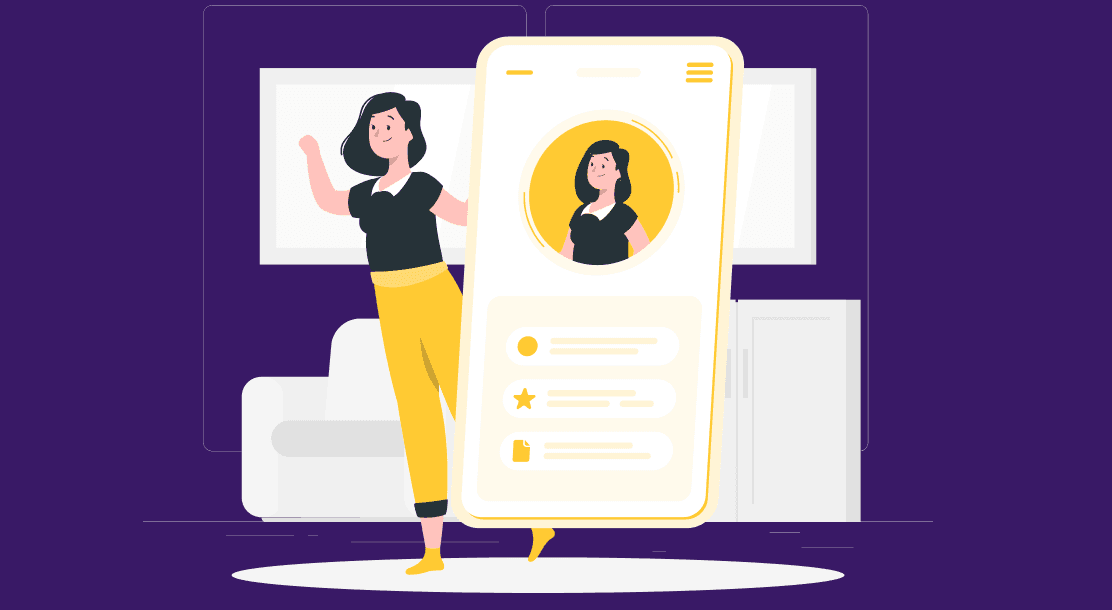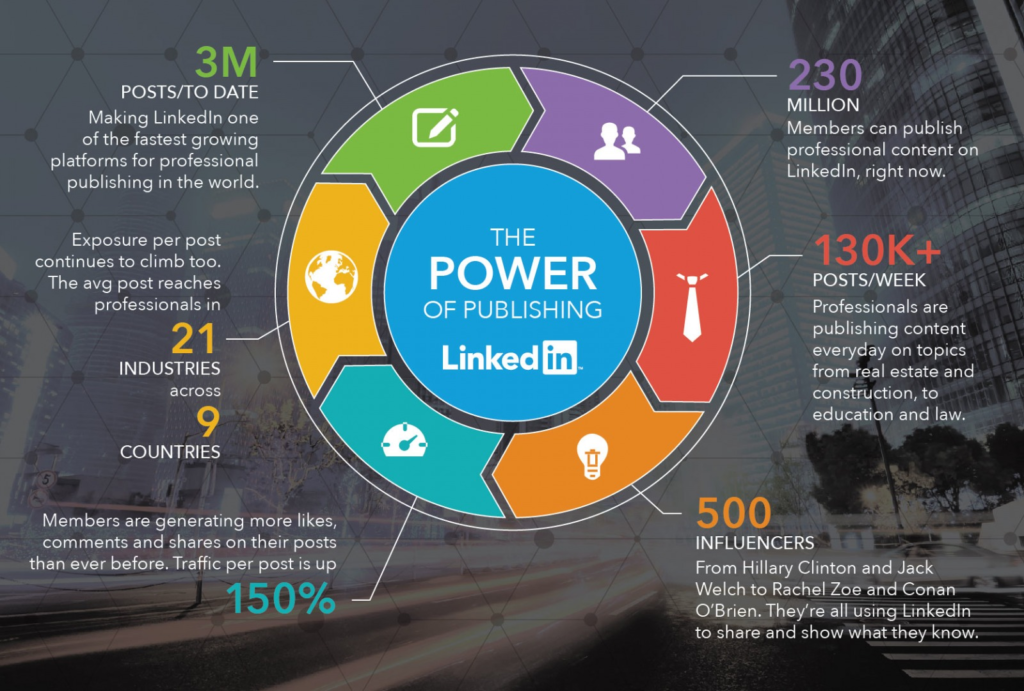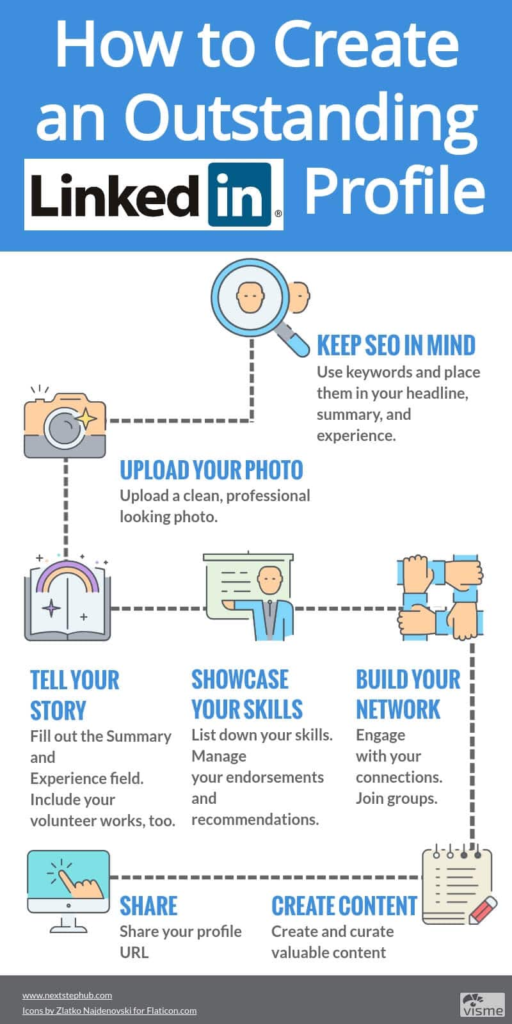How to Set Up a Freelance LinkedIn Profile That is a Client Magnet

Table of Contents
- Why LinkedIn
- Complete Your Profile to Gain 5 Stars
- Build Your Network
- Post Updates and Engage Everyday
- Showcase Subject Matter Expertise
- Attach Work Samples
- Key Takeaways
- Conclusion
- FAQs
If you have potential clients on LinkedIn, your freelance LinkedIn profile must stand out! Even if you are not and you are a freelancer, there are high chances that LinkedIn will be the first point of call that a prospect might use to look up your work or you. As a matter of fact, your freelance LinkedIn profile must be better than good if it is meant to attract some high-value clients, the sole reason being that if you don’t mention your worth, who will?
The secret sauce to getting more and more organizations chasing you is to have a killer foundation first and then make your LinkedIn profile part of that. The best part about LinkedIn is that you don’t pursue opportunities; they chase you! But what you need for that is a LinkedIn strategy. Some experts even believe that LinkedIn is one of the greatest marketing tools that a freelancer — or any professional for that matter — can have in their toolkit. If done right, it can even become the ONLY marketing tool that you might ever need to land some fantastic freelancing jobs. And it is possible with the click of a button.
Why LinkedIn
LinkedIn is a platform used by over 740 million members, with 40% of them logging in to the app or website daily. LinkedIn is also believed to drive much more social traffic to B2B blogs and sites than Facebook or Twitter. What kind of freelancers can make the most of it? Everyone – writers, designers, marketers, and many more. But for the purpose of this article, let’s talk about content specialists.
And why not? After all, LinkedIn is a one-stop shop for every style of freelancer. Do you want an editor for your publication? The platform has ample editors. Are you looking to land a book deal? Literary agents and publishers can be found here too. And, of course, agencies and organizations. Hundreds and thousands of them. And guess what? They are in constant need of content.

So let’s see how we can leverage this platform to the best!
Complete Your Profile to Gain 5 Stars
Well, isn’t that a no-brainer? Incomplete freelance LinkedIn profiles won’t get you where you aspire to be. Fill in every single section of the profile, and most importantly, pay special attention to two specific elements: your headline and your summary.
Your headline
This is a way of letting people know who you are in just 120 characters.
Things you can focus on include:
a) What do you do,
b) Who do you serve and
c) How you do it.
For example, if you are a personal finance writer, what you can probably write is, “I draft white papers for USA loan companies.” A freelancer who is a French translator and content writer can say, “I help companies market themselves in French markets via effective localization.” It is okay to play with this part of your freelance LinkedIn profile headline until you get it right. You never know what you might end up with!
Your summary
This is one of the most important steps and is, surprisingly, often skipped! Your summary is also a crucial element of your profile, and it gives you more than 2,000 characters to highlight yourself.
When people spot your profile on LinkedIn, usually when you post/publish something interesting or drop a comment on someone’s post, the first thing anyone will see is your photo and headline. If they are interested in you and want to know you more, they will click on your profile, and the very next thing they will probably do is check out what your summary has to say.
Using some strong keywords in your summary and headline can thus go a long way. These two places can also be used to embed the specific keywords you want to be found by. These could also be keywords you might have used while building your website.
If you are a freelance writer or translator, writing your summary in the form of a story can make it exciting for the reader. It will not look like a CV, and you will get a chance to highlight your writing skills right away. Including a client-centric question can also help. For example, “How am I different from others?” is a good question.
At the end of your summary, a CTA (call-to-action) can be added, which will prompt the reader to reach you. This could prompt them to send you an email or add you as a contact.
Banner – aka the attention grabber.
This is basically the cover photo displayed when someone clicks on your profile. So, yes, it is an attention grabber – especially if someone is using the desktop version of LinkedIn. This banner can be used creatively.
You can use it to pose a question like, “Is your company in a transition phase and hitting roadblocks?” It could be a results statement like, “Welcome! We consistently drive conversations with your potential clients to help you transform your business with ease,” or you can use it for stature and gravitas by using an image of yourself presenting a TED talk/speaking or maybe some award that you just received or logos of media houses that featured you in their collaterals.
Your profile photo
People often underestimate how crucial a profile photo can be. It is basically a visual handshake. It is one of the first things that a client sees when they land on your profile, and this profile pic helps build trust. An unfriendly or unprofessional photo could be a big turn-off.
Build Your Network
LinkedIn is all about networking, and as the tagline suggests, “connecting people.” As a freelancer, you want as many connections as possible—the bigger the network, the better. More connections mean more clicks, which means more traffic through your posts and news updates. Make a special effort to add as many new connections from your 2nd-degree connections to your contacts as possible. Target the type of connections/agencies/clients you want to attract with your status updates.
As a freelancer, you can focus on three types of contacts:
a) Other freelancers/colleagues
b) Influencers/experts and
c) Agencies/clients.
LinkedIn has an upper limit of 30,000 1st degree connections, but there is no limit on the number of followers you can have. Connections are important because you are essentially interacting and communicating with them whenever you post or comment. Do not send DMs, though, as they are often considered spammy. One of the best ways to keep interacting with your connections and their connections is by posting a status update (usually about your subject matter expertise) every day and engaging with content from other people through comments, etc.
Post Updates and Engage Everyday
A tried and tested tool to grow your network is by posting daily status updates. Whenever an update is posted, it is seen only by a part of the contacts in one’s LinkedIn network. However, if any contact from his network, likes, or comments on that update, then a part of their contacts will be able to see it too.
The visibility of your status update goes through the roof if they start attracting genuine comments from your connections. The whole idea behind this activity is that even if the contacts in your network do not require your services as a freelancer yet, one of their contacts might need you, and reaching those second or third connections is, thus, equally important. Therefore, commenting on other people’s status updates is one of the quickest ways to cross-pollinate your LinkedIn profile with those of second or third connections of your first connections. Don’t forget to engage with people who comment on your posts. It is always healthy to drive conversations. It is also a good practice to return the favor to these commenters by commenting or liking on their profiles, too.
Showcase Subject Matter Expertise
Since we have established that posting content and engaging is important, the next question that arises is: what is it that you should post about? How about a killer combo of highly engaging content that can include posts that are entertaining, helpful, educational, and relevant to your niche or industry.
One of the things that must not be forgotten is that every post or status update made by you puts yourself and your business in front of many other businesses. Therefore, it is not recommended to post vaguely. It is important to stick to a niche and build upon it through your posts.
And there you have it. Those clever tweaks will boost your visibility in no time. All we want to do is be visible in a sea of hundreds of thousands of profiles.
Attach Work Samples
Surprisingly, it is not common knowledge that LinkedIn allows users to attach a PDF file or an image to their work history. Why is it important? Firstly, it makes your profile stand out. Secondly, a potential client doesn’t have to look for or ask for your portfolio. It gives them a precise and quick summary of your skills and work experience. This will serve as an effective client magnet that potential leads can look at when visiting your profile.

Key Takeaways
- A freelance LinkedIn profile is an important aspect of your work profile. Make sure to make it perfect so that clients want to get in touch with you after going through your profile.
- Complete your profile to leave any area unfinished. An incomplete profile is a turn-off for potential clients.
- Expanding your network is important. Second and third connections are as important as the first connections. Don’t hesitate to reach out to them.
- It is important to keep engaging with your connections daily and add value to your network.
- Attach your work samples in a PDF or image format in your work history to get instant approvals from clients who are interested in the services you provide. These samples serve as an immediate skill gallery and are beneficial and time-saving to both freelancers and clients.
Conclusion
Now that you know why a freelance LinkedIn profile is an important part of your freelancing journey, go ahead and set it up. Don’t rush into it. Take your time, collect all your material, and slowly and steadily build your profile to become a client magnet.

FAQs
Below are seven steps to assist you in getting more clients through LinkedIn:
Step 1: A professional and neat profile
Step 2: Identify potential clients
Step 3: Send a welcome message or a thank you message if you receive a connection request
Step 4: Drop relationship-building messages
Step 5: Keep engaging with them through shared LinkedIn groups or posts and comments
Step 6: Gradually move these relationships offline
– Build a good online portfolio.
– Make sure you are visible at places your audience is
– Don’t miss leveraging social media platforms
– Be an expert in a niche and back it up with valid credentials
– Don’t forget to get reviews. These can then be published on your website or social media profiles
– Always ask your clients for referrals. These could be from your colleagues as well.
LinkedIn is an online platform that connects business professionals from around the world. You can connect with professionals from various industries and build your professional network through LinkedIn.
– Attach your work samples.
– Create a company profile.
– Convey your USP in your headline.
– List your accomplishments.
Latest Blogs
Explore how Google’s 2025 AI search updates triggered ranking chaos. Learn actionable strategies to adapt your SEO for AI Overviews, zero-click searches, and SERP volatility. Stay ahead now.
Learn how to rank on AI search engines like ChatGPT, Perplexity, and Gemini by optimizing your content for authority, structure, and relevance. Stay ahead in AI-driven search with this strategic guide.
Explore the best healthcare SEO services for your medical practice. Improve online visibility and effectively reach more patients in need of your services.
Get your hands on the latest news!
Similar Posts

Freelancing 101
5 mins read
11 Resources For Designers to Find Freelance Jobs Online

Freelancing 101
6 mins read
30 Freelance Industry Statistics to Get You Started

Freelancing 101
5 mins read